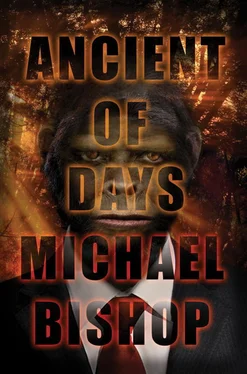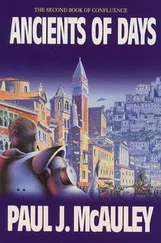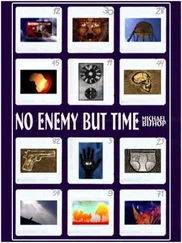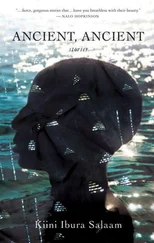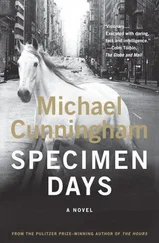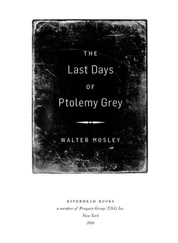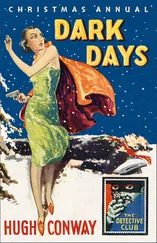“What’s dangerous about this exhibit,” RuthClaire said, “is that David and the others have put articles about the Duvalier government and our treatment of the Haitian boat people in odd places around the room. David’s originally from Brooklyn—a radical-pinko-commie with a monthly car payment.”
Blau put one arm across his midriff and bowed.
“What made you decide to go after Haitian art?” I asked.
“Adam did. He’s from a little island off the Haitian coast.”
“Paul knows,” RuthClaire said. “That’s how we got our surname.”
“Anyway,” Blau continued, “it seems that Adam’s people—the habiline remnant he was raised among—had occasional contact with members of the vaudun cult. The cult has its roots in West Africa, among the Arada-Dahomey Kingdoms, and even though Adam’s ancestors come from East Africa, they share their continent of origin and their negritude with the voodooists. The African-ness of the habilines and the majority of poor Haitians unites the two groups. It’s a mystical thing, I’m afraid.”
RuthClaire said, “Paul thought that a show in this old building was tantamount to deep-sixing an artist’s work in the Chattahoochee.”
“Not a bit,” said Blau, taking her arm. “Let’s show Mr. Loyd what really scares the more conservative members of our board.” We turned left into a small chamber with one strange, inward-curving wall, and I looked a question at RuthClaire.
“Eroticism,” she said. “Radical politics upsets fewer people than does graphic sex or nudity.”
“Especially if it has a racial or religious angle,” Blau added.
“Yeah, you get red faces, resignations, and withdrawn funding pledges.”
“Especially withdrawn funding pledges,” Blau said.
“Then why bother to show it?” I asked.
At which point I discovered that on the chamber’s curved wall, and on the two long straight walls connecting with it, were arrayed thirty or forty large black-and-white photographs in simple chromium frames. A piece of Plexiglas as big as an automobile’s windshield hung eight feet off the floor in the room’s center, and inside it was the word
STEREOTYPES
in thick, emphatic red letters, with the photographer’s name—Maria-Katherine Kander—in smaller characters beneath it. The photos jumped out like a sudden angry slap.
“Holy Christ,” I murmured.
“They’re best taken in small doses,” Blau told me. “But in here, you’ll have to prepare for a full-scale assault. Have a gander. We’ll stay out of your way.”
He and RuthClaire withdrew so that I could prowl along the curved wall looking at Ms. Kander’s outrageous photographs. The first I stopped at, and studied, showed an angular black woman lying naked on her back on a sterile white sheet. Stacked between her legs, and in turgid piles around her thighs and belly, lay at least a dozen tiger-striped watermelons, a gang-banging team of watermelons. The expression on the woman’s face suggested nothing short of complacent ecstasy.
I moved on.
Another photograph was a frontal nude of a black man from the shoulders down and the thighs up. This faceless man had a daunting erection. At an upward angle paralleling that of his hard on, he gripped the ebony barrel of a submachine-gun. I blinked and moved on. Next, an anorexic white woman in high heels and leather panties was lowering her mouth to the head of a microphone held out to her by a disdainful rock musician with an electric guitar draped across his body. Yet another photograph featured a sunken-eyed man in concentration-camp garb, a Star of David stenciled on his arm band, gripping the bars of a bank vault. Ingots of gold bullion—like so many loaves of gilded bread—loaded the shelves behind him.
An even more elaborate photograph showed a priest in a cassock speaking to a congregation of naked parishioners, his fingers crossed behind him. Some of the people in the pews were fondling each other, while a few elderly worshipers, pathetic in their wrinkles, frowned or slept. At the altar below the priest—the picture had been taken from behind his head—kneeled a chimpanzee in black tie and tails, a top hat on its head. I wondered at the length of time it must have required to stage that one.
Blau approached. “What’s the verdict?”
“They’re actually offensive. They seem to be trying to offend me.”
“They are.”
“They succeed.”
“If you say so,” Blau replied, “yes, they do.”
“Succeed in offending me?”
“In offending you and in fulfilling the artist’s intention.”
“That intention being to offend?”
RuthClaire appeared at my elbow. “You’ve got it.”
“Good,” I said. “Until just now I was pretty sure you guys would regard my taking offense as reprehensibly unhip.”
“No,” Blau conceded, “they’re definitely offensive.”
RuthClaire nodded agreement. “ Intrinsically offensive.”
“Offensive in an absolute sense,” Blau added.
We stood in the gallery room looking at the definitely offensive, intrinsically offensive—offensive in an almost absolute sense—photographs of Maria-Katherine Kander. Our abashed reverence before these disgusting artifacts began to irk me. Their “eroticism”—I hadn’t seen anything that truly qualified—seemed to consist mostly of exposed flesh and simulated acts of fetishistic sodomy. Despite RuthClaire’s implied disclaimer, I saw the pictures as pornographic political statements. They were racist, misogynist, fascist, anticlerical, and maybe a dozen other things too twisted or subtle to pinpoint. Antievolutionary? Pro-consumerism? I had no idea. But their offensiveness was beyond question.
“What’s the goddamn point?”
“Paul, try not to get ridiculously worked up over this.”
“You mean there are degrees of offense that it’s unhip to take? I thought I could get as goddamn offended as I liked.” I appealed to Blau. “All I’m asking is, What’s the goddamn point of taking pictures that are meant to offend?”
“Really,” he replied, “it would be out of bounds for me to speak for Ms. Kander. Worse, you’d probably take it as some sort of definitive statement or explanation of her intent, which wouldn’t be fair to either the artist or you.”
“Criminy!” I said. “Who is this gal? Her name sounds German. Is she a Nazi?”
RuthClaire, who had an ostensibly calming hand on my arm, said, “I don’t know her ethnic background. She’s from Tennessee.”
“She doesn’t live in Atlanta,” I hazarded. “She’d be an idiot to show such crap here—in this neighborhood, in a city with a black mayor—and try to live here, too.”
“She’s based in New York City,” Blau said, “but she could live in Atlanta if she wished. Atlantans are more knowing about contemporary art than you might think.”
“Unlike your average hick from Beulah Fork?”
“Paul,” RuthClaire said, “let’s go see Adam’s work.” She put a gentle pressure on my arm. “Before the crowd comes in.”
“Wait a minute. I want to know David’s interpretation of Ms. Kander’s intent.”
“But that would be to preempt—”
“RuthClaire, for God’s sake, let me talk to the man.” I rounded on Blau. “Look, I’ve got a mind of my own. You won’t unduly influence my own final stance. I’m trying to understand—to appreciate —these photographs. Isn’t that what an exhibit is for, to prompt greater understanding and appreciation of an artist’s work?”
Blau surrendered to my tirade. “Okay, you’re passionate about this. You deserve an answer.”
I waited.
“I think Kander’s attempts to offend are motivated by a desire to heighten our outrage at the stereotypes she presents. It’s satire, Mr. Loyd, not a call to embrace what you see as, God forbid, accurate depictions of the people involved. Her technique forces you to reassess your basic attitude about each image. The art’s not only in her skills as a photographer, but in the outrageous scenes she stages for the camera. I get off on that. The young lady’s droll.”
Читать дальше
